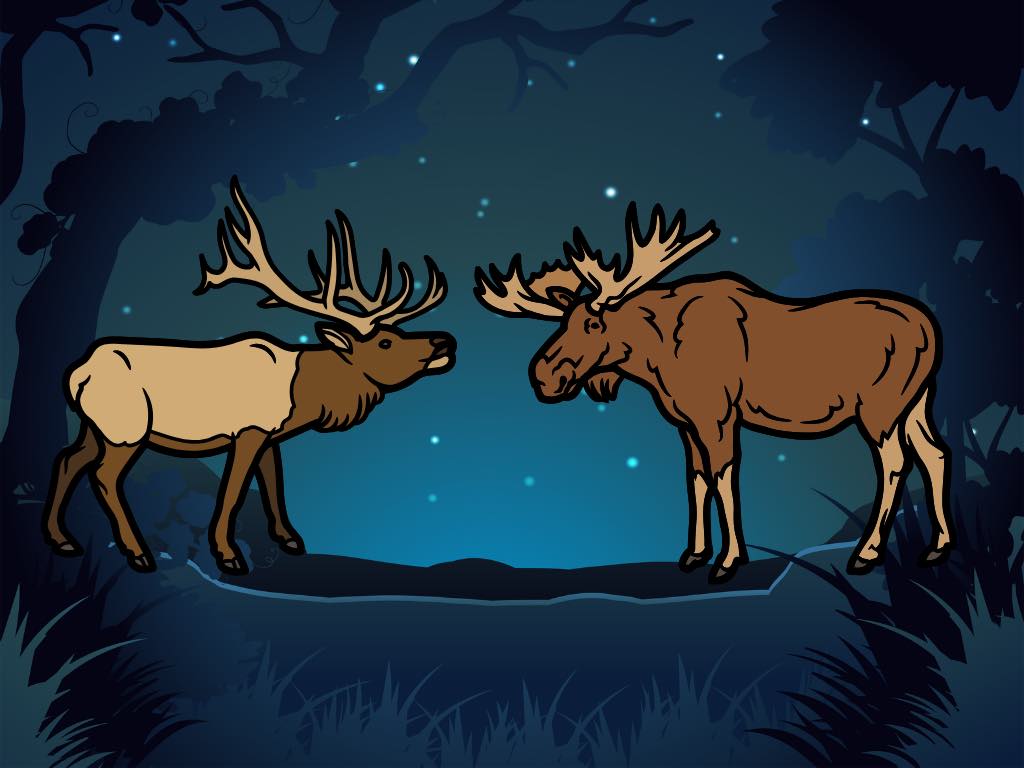
Savoring the Wild: A Deep Dive into Moose vs. Elk Meat
|
|
Time to read 4 min
Welcome to One Stop Halal!
Written by: Najma A.
|
|
Time to read 4 min
Regarding game meats, moose and elk are two popular choices that often intrigue culinary enthusiasts and outdoor adventurers alike. Both animals belong to the Cervidae family but exhibit unique characteristics, including flavor profiles, nutritional values, and culinary uses. This comprehensive guide will explore the distinctions between moose vs elk meat, helping you make informed choices for your next culinary adventure.
Before diving into the specifics of their meats, it's essential to understand the animals themselves.
Moose are the most prominent members of the deer family, characterized by their long legs, broad hooves, and distinctive palmate antlers found in males. They inhabit northern regions of North America, Europe, and Asia, preferring cold, wooded areas and wetlands. Moose are solitary animals, often found near lakes and rivers where they can feed on aquatic vegetation.
Elk are slightly smaller than moose but are still one of the largest deer species. They are known for their impressive, more pointed, and tined antlers than moose antlers. Elk are social animals, often found in herds, and inhabit forests, grasslands, and mountainous regions across North America and parts of Asia. They are particularly noted for their vocalizations, especially during the mating season when males bugle to attract females.
The flavor of moose and elk meat can vary depending on their diet, habitat, and preparation methods.
Both elk vs moose meats can be prepared in various ways, depending on the cut and desired dish. Here are some popular culinary uses for each type of meat:
Both elk versus moose meats hold cultural significance in the cuisines of various regions, particularly in North America and parts of Europe. In Scandinavia, moose is a traditional ingredient in stews, sausages, and smoked dishes, while elk meat is popular in indigenous and rustic North American recipes. Local spices, such as juniper berries and spruce tips, complement these meats, bringing out their unique flavors. Trying regional recipes can offer a new perspective on these meats and help you appreciate the cultural heritage that comes with each dish.
Cooking game meats can differ from cooking traditional meats due to their lean nature. Here are some tips to ensure a successful cooking experience with both moose and elk meats:
Hunting moose and elk is often seen as a sustainable practice, particularly in regions where populations are managed to prevent overpopulation and ecological imbalance. Both types of meat are considered a more sustainable protein source than factory-farmed livestock, as they are wild animals that feed on natural vegetation.
When hunting, it's essential to adhere to local regulations, practice ethical hunting methods, and respect wildlife and their habitats. Sustainable hunting practices ensure that future generations can enjoy these delicious meats while maintaining healthy ecosystems.
Welcome to the Home of Elk Meat. We carry various elk meat cuts that are hard to find elsewhere. We deliver to your doorstep anywhere in the United States within 1-2 business days.
In summary, elk and moose are exceptional game meats with unique flavors, nutritional benefits, and culinary versatility. While moose meat tends to have a bolder, richer flavor, elk meat is milder and often favored for its tenderness. Whether preparing a gourmet meal or a rustic outdoor dish, both types of meat can elevate your culinary experience. With some knowledge and creativity, you can enjoy these delicious meats while celebrating the beauty of nature and sustainable practices. As you explore the world of game meats, remember to appreciate each one's distinct qualities and experiment with various recipes to find your favorites.

© 2026 One Stop Halal, Inc.